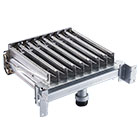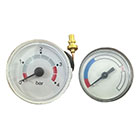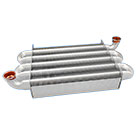Products List
Introduction to Gas Pressure Regulators (1)
What is a gas pressure regulator?
A gas pressure regulator is a device used to control and maintain the desired pressure of gas flowing through a system. It is commonly used in various applications where precise control of gas pressure is necessary, such as in industrial processes, heating systems, and gas distribution networks.
The primary function of a gas pressure regulator is to reduce the high-pressure gas from a supply source, such as a gas cylinder or pipeline, to a lower, more manageable pressure suitable for the intended application. It ensures that the downstream pressure remains constant within a specific range, regardless of fluctuations in the upstream pressure or flow rate.
Gas pressure regulators typically consist of a diaphragm or piston mechanism that responds to changes in pressure. When the downstream pressure exceeds the set point, the regulator restricts the flow of gas to maintain the desired pressure. Conversely, if the downstream pressure drops below the set point, the regulator opens up to allow more gas into the system.
Regulators may also include additional features such as pressure gauges, vent valves, and safety devices to ensure proper operation and prevent over-pressurization. They are available in various sizes, types, and pressure ranges to accommodate different gases and applications.
It's important to note that gas pressure regulators should be installed and maintained by qualified professionals to ensure safe and reliable operation.

The gas pressure regulators are designed primarily for main burner and pilot load applications. Typical applications include residential and commercial cooking appliances, barbecues, hearth products, and pilot lines. As a professional gas Pressure regulator manufacturer and supplier, the gas Pressure regulator we provide has obtained CSA, EC, and AGA certifications.
Our rubber seat poppet models offer the ultimate in design features and performance capabilities to meet your specific appliance or utility requirements.
Our gas pressure regulator inlet pressure is divided into 11 (LPG) and 7 (NG), and outlet pressure is divided into 8,9,10 (LPG), and 3,4,5,6 (NG); the flow rate is 60,000 BTU/hr, suitable for use in Free constant cooker, BBQ, gas stove, camping stove, gas grill and gas space heater ect, Our company offers a variety of other type Gas Pressure Regulator components. Our company offers a variety of other types of Gas Pressure Regulator components. If you want to buy it, you can contact us directly.

What materials are used to produce gas pressure regulators?
Gas pressure regulators are typically made from a variety of materials, depending on the specific application and the type of gas being regulated. Some common materials used in the production of gas pressure regulators include:Brass: Brass is a popular choice for gas regulators due to its excellent corrosion resistance and durability. It is commonly used for low to medium-pressure applications.
Stainless Steel: Stainless steel is known for its high strength, corrosion resistance, and ability to withstand high-pressure environments. It is often used in industrial and high-pressure gas regulation applications.
Aluminum: Aluminum is lightweight and has good corrosion resistance properties. It is commonly used in low-pressure gas regulation applications.
Cast Iron: Cast iron is a strong and durable material that can handle high-pressure applications. It is often used in larger industrial gas regulators.
Plastics: Certain types of plastics, such as polytetrafluoroethylene (PTFE) or reinforced thermoplastics, may be used for specialized gas regulators that require chemical resistance or specific performance characteristics.
It's important to note that the material selection for gas pressure regulators depends on factors such as the type of gas, pressure range, temperature, and standards applicable to the specific industry or region.



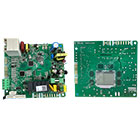
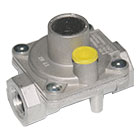
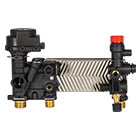
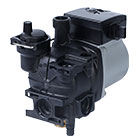
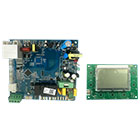
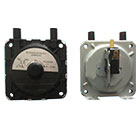
-f.jpg)
